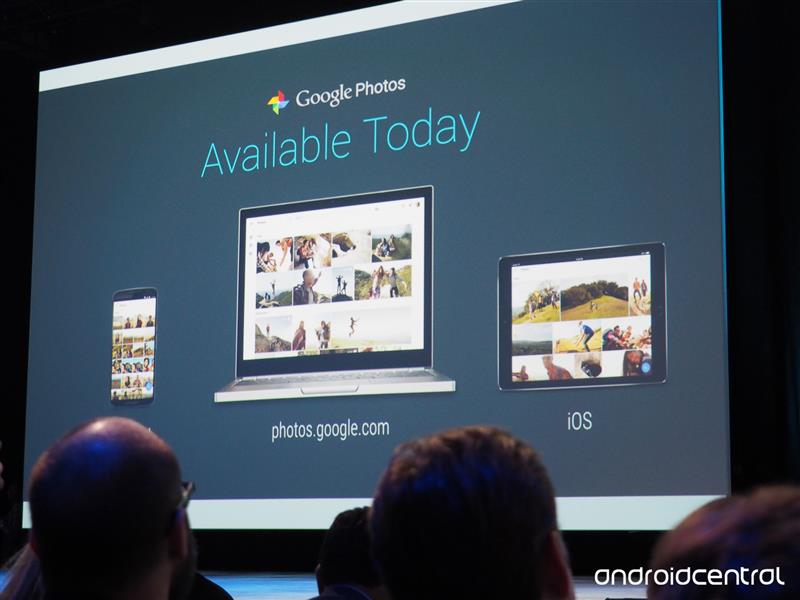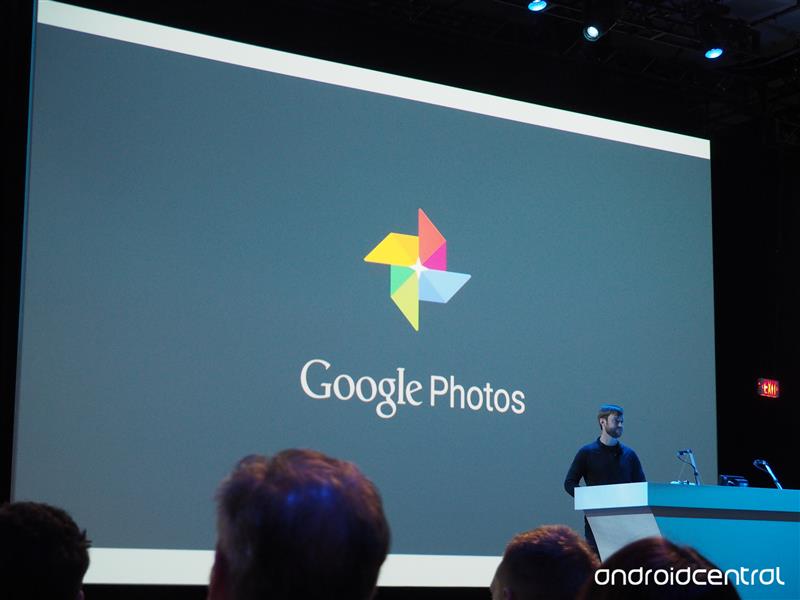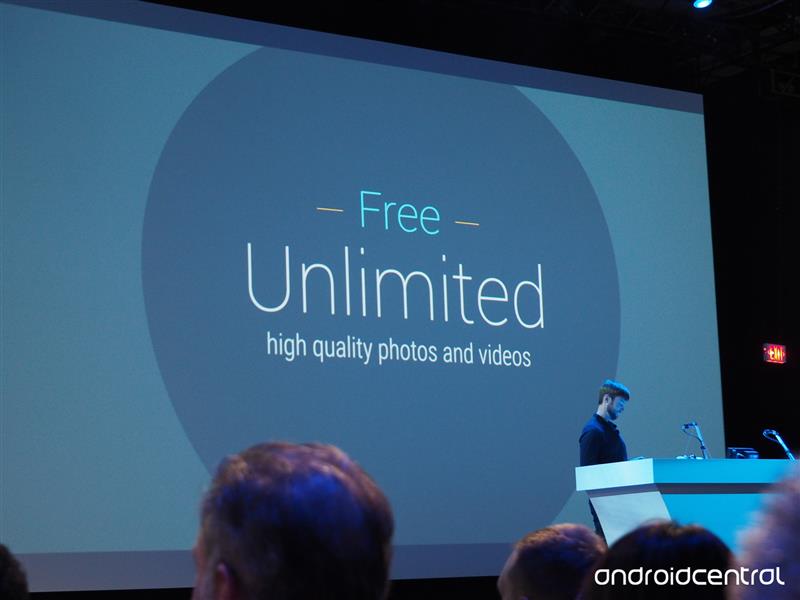Google Photos may be free — but there's still a cost


Updated on 5/29 10AM ET to add information from Steven Levy's excellent interview with Google Vice President of Streams, Photos, and Sharing Bradley Horowitz, and to add information about Google's high-quality photo pricing tiers.
For more on Google Photos, check out Android Central's comprehensive coverage
Google announced its new Photos service at I/O today: It looks a lot like iCloud Photo Library, but with even more perks. Automatic slideshow movies! Insta-GIFs from burst photos! Interactive stories! You can automatically search for faces, places, and things without tagging! It syncs with iOS and the web! And, oh yeah — unlimited* (if your photos are 16MB or less) storage for free. What could be better?
Well, to start, it's important to know what "free" might actually cost you, and whether you're okay with that tradeoff.
The dark side of free
As a company, Google has a lengthy history of offering free services with outrageously awesome storage capacities: Look at Gmail or Google Drive. There's a great business reason for that: free, in many cases, equals mass adoption. People love free things. One less bill I have to deal with? Sign me up!
As a result, you get an awesome service you don't have to pay money for. But what does Google get from this relationship? Data. Lots and lots of data.

When you offer a free service, you're likely to get many more people to sign up or download it than if that service was offered at a cost. Google in large part uses this data to improve and expand its services: It needs those vast user numbers to make its services the best in the world. But because the company isn't charging for its services to get those user numbers, it still has to make money — it isn't a charity.
Master your iPhone in minutes
iMore offers spot-on advice and guidance from our team of experts, with decades of Apple device experience to lean on. Learn more with iMore!
And therein comes the potential dark side of Google's data usage, where the company pays its debts by leveraging its biggest asset: you. The millions of people who sign up for free Google services agree to terms and conditions that give the company permission to access certain subsets of any information you put online.
In plain English, that means being able to sell custom ads against your data: showing you a Nordstrom ad for shoes, for instance, because Google knows from search or web history that you looked at some yesterday, or from Gmail that you purchased heels at the store last week.
The company uses this data to sell to advertisers, and advertisers in turn get a much closer look at you, your spending habits, and your daily activities. For some people, this is a perfectly reasonable tradeoff for "free". But many others sign up for these services without ever quite realizing what they've given away.
The potential of photographic data
An image may be worth 1000 words, but image metadata may spill far more information than that, especially when applied to a Google service. According to this year's Google I/O keynote, the Photos service will offer a search function that can find people, places, and objects — all without any active tagging on the end user's part.
It does this in part by scanning your image's metadata: the location and other information your camera builds into the underlying code of your digital image. For the rest, I suspect Google is inventing its own supplemental metadata, using rapid image scans and automatic face detection as part of the company's continuous "machine learning" system. It may not be perfect at the start, but as Google gets more and more photographs to scan, it could become the most accurate auto-tagging service on the Internet.
In an interview with Medium's Steven Levy, Google Vice President of Streams, Photos, and Sharing Bradley Horowitz talks a bit about their systems for doing this:
We have a proliferation of devices and storage and bandwidth, to the point where every single moment of our life can be saved and recorded. But you don't get a second life with which to curate, review, and appreciate the first life. You almost need a second vacation to go through the pictures of the safari on your first vacation. That's the problem we're trying to fix — to automate the process so that users can be in the moment. We also want to bring all of the power of computer vision and machine learning to improve those photos, create derivative works, to make suggestions…to really be your assistant.
On one hand, that's fantastic for users: They'll have a speedy, smart search option that can help bring up the image they're looking for even if they've never written a word about it.
But, like with Gmail, this kind of technology innovation costs money: I doubt the company is making this feature available out of the kindness of its heart. Google has yet to put up its terms and conditions for Google Photos, so we don't quite know what it might do with this metadata — how the company's advertisers might be able to use or not use it — and whether you'll be able to opt-out and still use the free service.
According to Horowitz, Google has no plans to utilize this data for advertising or other means... yet:
The information gleaned from analyzing these photos does not travel outside of this product — not today. But if I thought we could return immense value to the users based on this data I'm sure we would consider doing that. For instance, if it were possible for Google Photos to figure out that I have a Tesla, and Tesla wanted to alert me to a recall, that would be a service that we would consider offering, with appropriate controls and disclosure to the user.
I want to reiterate that Google's goals for using your information aren't intentionally shady: The company is trying to use your data to help you live your life. Down the line, however, targeted ads may well fit into that life. It's just a matter of what data you want to share (and potentially give) to companies for their usage.
Take Yahoo's Flickr, which offers 1TB of free photos storage: In the company's privacy policy, it notes the following:
Advertisements shown to you may be related to textual information, such as metadata and notes, associated with the photo you are seeing, or the search term you entered.... We use image recognition algorithms to identify scenes, actions, or objects to tag your photos and make it easier to search images. You may hide your images from appearing in search results.
Flickr's advertisers can not only insert ads into your Flickr timeline, but they can also use your metadata and information to customize ads for you. Hypothetically, this information-gathering could result in something like the following: Say you went to Disney World last November, and you pull up the photo album in May to give it a look through. After your tenth picture, you get an ad that encourages you to plan a trip to Disney World this fall and gives you a special coupon for it.
Helpful? Sure. Creepy? Just a bit.
It's also worth noting that Google Photos isn't entirely free in the conventional sense: Despite not mentioning it on-stage at the I/O keynote, Google's service is only free for those uploading video under 1080p and photos under 16 megapixels. Upload anything larger — say, a great DSLR shot — and if you're on the free plan, it's automatically compressed. For some, again, this may not be a problem, but those who want to back up their images at full resolution will have to pay for a plan. To Google's credit, those plans are significantly cheaper than Apple's storage options: 1TB will cost you $10 on Google to Apple's $20. For people with large libraries that won't quite fit into iCloud Photos Library or those on more of a budget, that's an incredibly appealing price.
Proceed with caution
As I've said multiple times above, I'm not going to advise people against signing up for Google Photos: Google has a lot of admirable technical goals, and it genuinely believes this kind of mass data-gathering will help achieve those goals. But the company may not be able to get the vast userbase numbers it needs to make its search services best in class without making those services free. And if they're free, Google has to pay for them in another way. Right now, Google has no plans for ads in your photos, a la Flickr, but, as Horowitz said, they're not opposed to the idea.
Apple has chosen to go the opposite route for its Photos service: The company charges for storage beyond 5GB, but underneath that is a top-tier guarantee against data-mining and unauthorized use of your personal information. But that monetary cost — atop a dozen other bills — has proved somewhat of a barrier to people looking to store their full libraries in iCloud. Google's large free tier and pricing for larger, HQ libraries is a shot across the bow to Apple in that department, and it'll be interesting to see if Apple responds come WWDC time. The service is currently being outpriced by almost every other one in the game, and it might be worth putting a few million dollars from its massive savings account toward storage to encourage new users to give it a try.
Choose your own adventure
At the end of the day, it's up to you to choose whether you're spending your money or your data on your online services. It's a personal call. I'm not going to decry Google for its practices, nor will I put Apple's iCloud Photo Library service on a pedestal. All I'm advocating for is that when you choose a photos service, you know and choose how you're paying for it. For me, that choice is simple.
Serenity was formerly the Managing Editor at iMore, and now works for Apple. She's been talking, writing about, and tinkering with Apple products since she was old enough to double-click. In her spare time, she sketches, sings, and in her secret superhero life, plays roller derby. Follow her on Twitter @settern.

